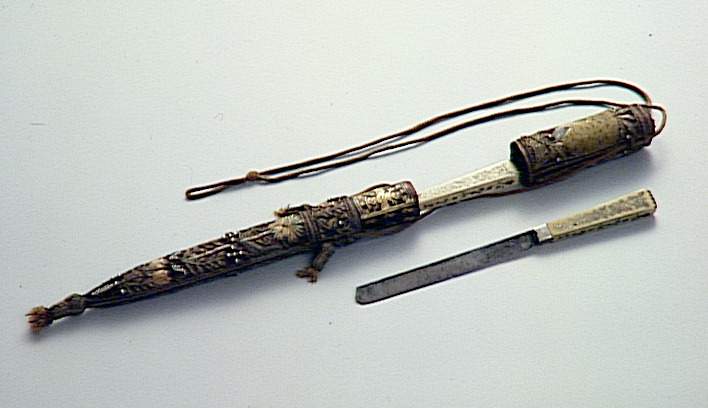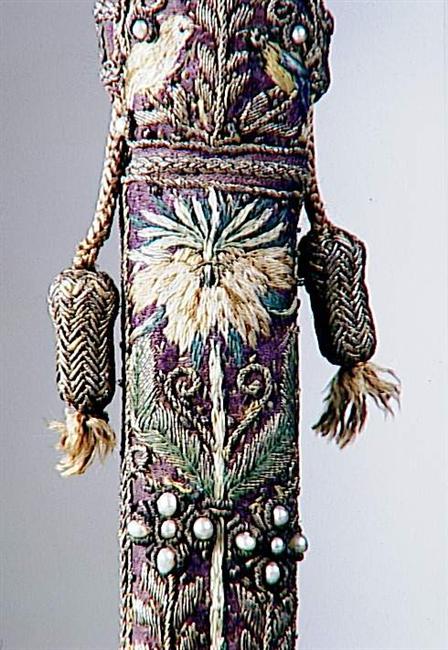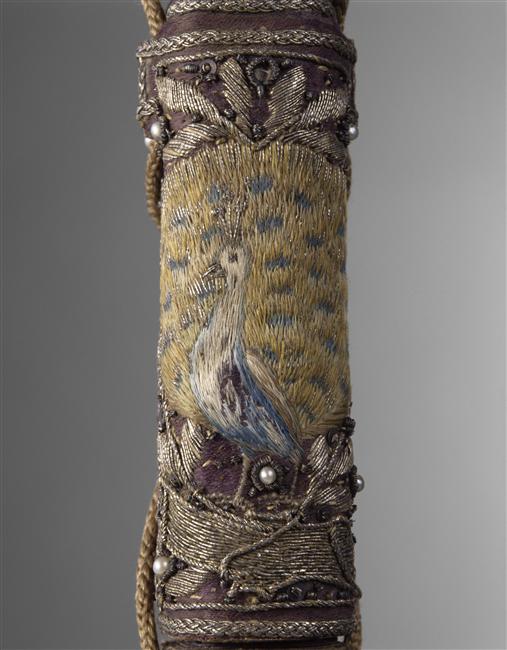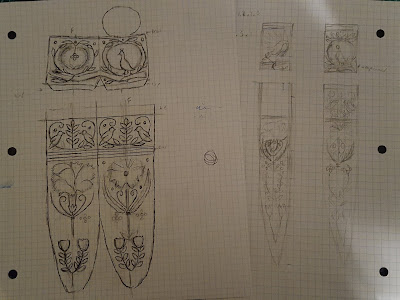
This latest book was made for Duchess Thyra as she was inducted into the Order of the Laurel. It was a lot of fun to do! After my foray into counted work, I retreated back into my love of shading and color for this book.

Thyra is a well know scribe who makes absolutely amazing scrolls, but I think many people outside of the dance community don't know about the passion and joy she brings there, as well. My goal was to make sure her book brought that aspect of her arts forward in people's minds.
I, of course, know nothing about dancing, so I looked to another expert: Philip White. He pointed me to a large variety of resources with many gorgeous images. The only downfall was that all of the images were
people. Embroidering a person seemed like a lot of commitment.
(I'm sure you can guess where this goes.)
After some more searching around and back and forth with Philip, I decided that the first images he sent me were the best for my purposes. These were from
Arbeau's Orchesography. The man on the right was chosen because apparently the move he's doing (a capriole) is one of Thyra's favorites. The woman on the left was because I wanted symmetry, and a woman, and there wasn't a whole lot of choice. There didn't seem to be any images women being active, which I'm sure could fuel a whole thesis.
The arrangement of the cover is very loosely based on the Felbrigge Psalter, in that there are two figures interacting with each other with split stich shading used to embroider then. The laurel and heraldry are pretty serious deviations from the design, and are included because it's a vigil book. I chose this style of embroidery because I associate Thyra with the 14th century (for no real good reason, I admit) and split stitch shading was a very common technique in the more ornate embroideries of the day. Often it was combined with goldwork to make something truly spectacular...but I admit I didn't have that kind of time. A more focused recreation of the Psalter might be in my future...
The book that I was using was hand made by Marion. It's about 4.5 x 6 inches, and the embroidery is about 4 x 4 inches. Which, turns out, is pretty small for the detail, and I made some choices that don't align with the smooth lines of color you see in Opus Anglicanum. There are many small areas of color in an attempt to pack a little more detail into a small space. I also think I wasn't comfortable committing to the larger bits of color, and I need to experiment more with that in the future.
Completely unsurprisingly, hands and faces were very hard to get to look remotely like hands and faces.
The fabric was a saturated blue (because it reminds me of some of the amazing dresses Thyra wore as Queen) but thankfully I was still able to trace the design onto it with a lightboard and pen.
All the embroidery was done with 2 strands of Splendor silk thread, except for some small details. One strand was used in the hands, for example. And for the faces I used Au v'Frenchname 100/3, which was still hard to get where I wanted it to go.
There are three shades each of red and green in the piece, and four neutral shades for the black, grey, and white areas of clothing. Two peach shades were used for the hands and faces, and two shades of brown for hair. In the picture to the right you can see that I spent a lot of time with a multitude of "parked" threads as I went between colors.
When I finished the figures and laurel, I realized that I had made the heraldic shield off center. And of course, the lines weren't erasable. You can see some white lines where I sketched in a slightly larger version.


And because Thyra loves scribes and embroiderers everywhere, her device was very simple to add. Hooray for geometric shapes!





























